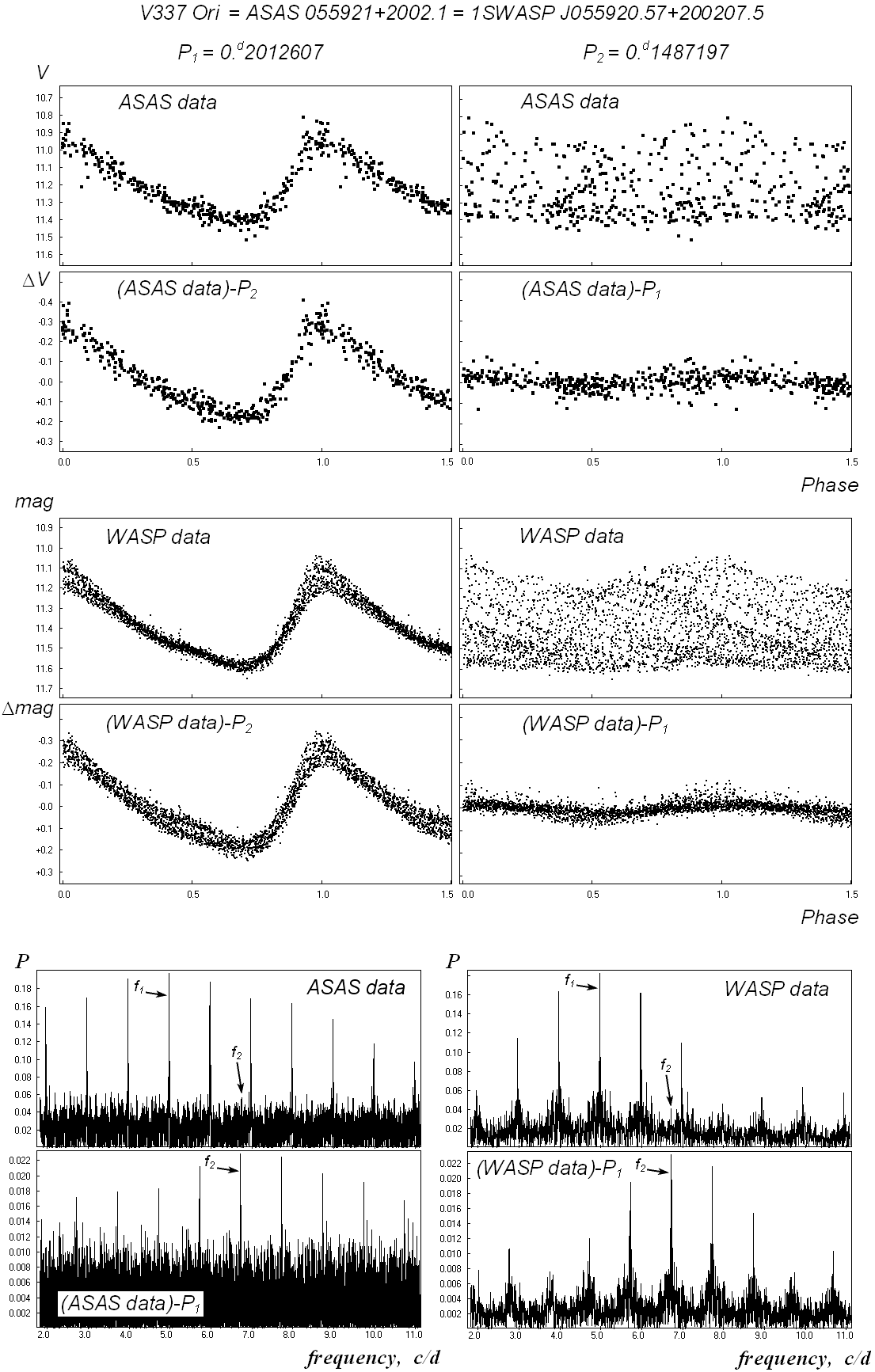| Article in PDF |
"Peremennye Zvezdy", Prilozhenie, vol. 11, N 24 (2011) |
V337 Ori, a High-Amplitude Delta Scuti Variable Star with Radial and Nonradial Pulsation
A. V. Khruslov
Russia, Tula
| ISSN 2221–0474 |
Received: 7.04.2011; accepted: 28.06.2011
(E-mail for contact: khruslov@bk.ru)
| ||||||||||||||||||||||
Remarks: | |||||||||||||||||||||||||
| Samus and Antipin (2006) communicated that V337 Ori = GSC 1320-00167, earlier believed
to be a short-period, probably, eclipsing, variable (Hoffmeister 1949), irregular
variable
(Ahnert 1950), late-type star (M5, Neckel 1958) was actually a white star, the earlier
announced spectral type actually corresponding to a neighbor. They analyzed ASAS-3
and
ROTSE1/NSVS data and found the variable to be a high-amplitude Delta Scuti (HADS)
variable with
the light elements:
JD(max) = 2453068.586 + 0.201261 d x E.
The GCVS currently gives the type DSCT and the light elements JD(max) = 2453068.587
+ 0.2012592 d x E, derived by GCVS compilers.
I analyzed all available observations of V337 Ori from the ASAS-3 (Pojmanski 2002) and SuperWASP (Butters et al. 2010) online public archives. By now, the ASAS-3 data have been considerably appended with new observations, and their analysis permitted me to detect a nonradial pulsation co-existing with the principal mode, a finding then completely confirmed with the analysis of SuperWASP data. When reducing the SuperWASP observations, I rejected nights with large scatter of data points, probably due to instrumental errors. The WASP data from different time intervals exhibit considerable differences of the mean brightness, so that we had to consider two time intervals separately. The figure presents the results of our analysis for the JD2454022–2454155 time range. The JD2453245–2453278 time interval was rejected because of its being short, with too few observations. The observations were analyzed using the period-search software developed by Dr. V.P. Goranskij for Windows environment. The SuperWASP observations are available as FITS tables which were converted into ASCII tables using the OMC2ASCII program as described by Sokolovsky (2007).
P2/P1 = 0.7389. The nonradial frequencies 7.6173 c/d (P = 0.13128 d), 6.6908 c/d (P = 0.14946 d) and 17.663 c/d (P = 0.056615 d) are also not excluded. Acknowledgements: Thanks are due to Dr. K.V. Sokolovsky for his advice concerning data retrieving. | |||||||||||||||||||||||||
| References: | |||||||||||||||||||||||||
| Ahnert, P., 1950, Mitteilungen Ver. Sterne, Nr. 118
Butters, O.W., West, R.G., Anderson, D.R., et al., 2010, Astron. and Astrophys., 520, L10 Hoffmeister, C., 1949, Ergänz. Astron. Nachr., 12, Nr. 1 Neckel, H., 1958, Astrophys. J., 128, 510 Pojmanski, G., 2002, Acta Astronomica, 52, 397 Samus, N.N., Antipin, S.V., 2006, IBVS, No. 5699 (Star No. 4) Sokolovsky, K.V., 2007, PZP, 7, 30 |
Light Curve
|